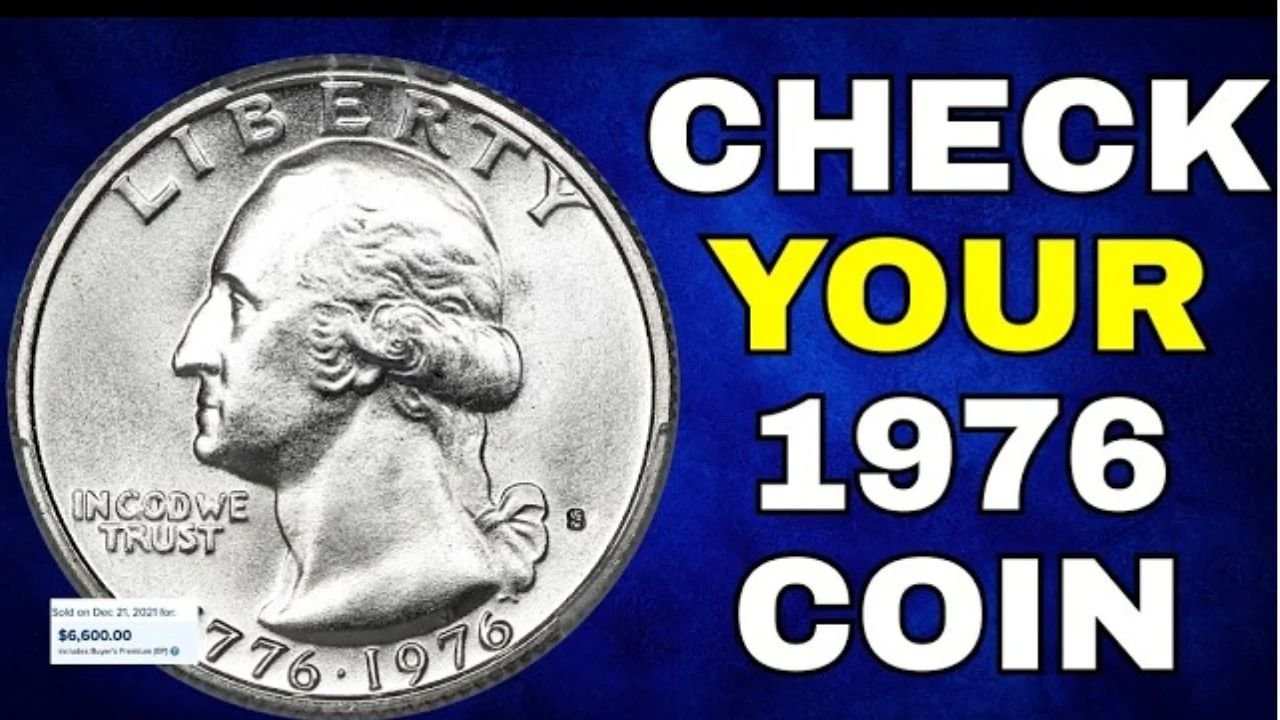Discover The Rare 1976 Bicentennial Quarter Worth $2.2 Billion – Still In Circulation!, When it comes to American coins, few carry the historical weight and collector intrigue quite like the Rare 1976 Bicentennial Quarter. Minted in celebration of the United States’ 200th anniversary, this special quarter has become more than just pocket change—it’s now a nostalgic artifact and, in some cases, a sought-after collector’s item. Though millions were minted, only a handful hold significant value today, and understanding why can open your eyes to a fascinating corner of U.S. numismatics.
In this article, we’ll explore the origins Rare 1976 Bicentennial Quarter , unique design, minting details, and the reasons why certain Rare 1976 Bicentennial Quarters are worth more than face value. Whether you’re a coin collector or simply curious about the change in your drawer, this guide will help you recognize whether your Bicentennial Quarter is just another coin—or a hidden gem.
The Story Behind the 1976 Bicentennial Quarter
The Rare 1976 Bicentennial Quarter was introduced to commemorate 200 years of American independence. It replaced the standard quarter for a brief time, featuring a special design that celebrated the revolutionary spirit of the nation. What makes this quarter especially noteworthy is its reverse design—an image of a Colonial drummer boy accompanied by a torch of victory encircled by thirteen stars, symbolizing the original colonies.
This striking design, created by Jack L. Ahr, made a dramatic shift from the traditional eagle design that had graced the reverse side of quarters since 1932. Meanwhile, the obverse retained the familiar portrait of George Washington, maintaining a visual tie to previous issues. A unique element of the Bicentennial Quarter is its dual-date: 1776–1976, a proud reminder of America’s birth and the milestone two centuries later.
Why the Rare 1976 Bicentennial Quarter Captivates Collectors
The Rare 1976 Bicentennial Quarter isn’t rare in the traditional sense—over 1.6 billion were minted. But within that massive production run are coins with special characteristics that make them truly valuable to numismatists. These rarities include pristine uncirculated examples, silver-clad versions, and coins with striking errors.
Here are the major factors that make certain Bicentennial Quarters stand out:
1. Condition and Grading
Coin collectors value condition above almost anything else. A Bicentennial Quarter that has never entered circulation—referred to as “mint state”—can fetch far higher prices than worn versions. These coins are often graded on a 70-point scale by professional services like PCGS or NGC. A coin graded MS67 or higher is particularly desirable.
2. Silver Composition
While most Bicentennial Quarters were struck in copper-nickel clad, a limited number were minted in 40% silver for special collector sets. These silver quarters are often more valuable, especially in uncirculated or proof condition. You can identify them by their edge: silver quarters lack the copper stripe visible on clad coins and feel slightly heavier.
3. Minting Errors
Some Rare 1976 Bicentennial Quarters are known for their minting errors—double dies, off-center strikes, or missing elements. These mistakes, though rare, make coins significantly more valuable due to their uniqueness and low occurrence.
4. Proof and Uncirculated Sets
The San Francisco Mint produced special collector versions of the Bicentennial Quarter—both proof and uncirculated. Proof coins, in particular, have a mirror-like finish and sharper details, making them highly desirable. The “S” mint mark is a strong indicator of these special editions.
Separating Fact from Fiction: Are Bicentennial Quarters Worth Millions?
You may have seen viral posts or videos claiming a Rare 1976 Bicentennial Quarter is worth millions—even billions. These sensational claims are largely false and often clickbait. While there are Bicentennial Quarters that have fetched several thousand dollars at auction—particularly those in perfect condition with rare errors—no verified coin from this series has ever reached million-dollar status.
Here’s the truth: most Bicentennial Quarters are worth face value, or slightly more—usually between $1 and $15 depending on condition. However, rare exceptions can command impressive prices:
- Silver Proof Bicentennial Quarter (graded PR70) – Can fetch $200–$500+
- Error Coins (like double dies or off-center strikes) – Values range from $100 to $3,000+
- High-grade uncirculated coins (MS67 or higher) – Typically valued from $150 to $1,500
While not life-changing money, these values are remarkable considering the coin’s original worth is just 25 cents.
How to Identify a Rare 1976 Bicentennial Quarter in Your Collection
If you’re holding onto a Bicentennial Quarter or come across one in circulation, here are steps to help determine if it’s one of the rare varieties:
Also Read : £1250 Universal Credit Bonus Coming in 2025 – Check If You Qualify
1. Check the Mint Mark
Look just to the right of Washington’s ponytail on the obverse. You’ll find a small letter indicating the mint:
- “P” for Philadelphia (no letter before 1980, so it may be blank)
- “D” for Denver
- “S” for San Francisco (typically associated with proof or uncirculated coins)
2. Inspect the Edge
If the edge of the coin has a clear copper core, it’s a standard clad coin. A silver quarter will appear a consistent silver color all around, without that copper stripe.
3. Weigh the Coin
Use a precise scale:
- Clad quarters weigh about 5.67 grams
- Silver-clad versions weigh about 5.75 grams
Even a small difference can point to a more valuable specimen.
4. Look for Errors
Use a magnifying glass or jeweler’s loupe to examine:
- Doubling in the “IN GOD WE TRUST” or “LIBERTY”
- Misalignment or off-center designs
- Die cracks or missing elements
The Joy of Collecting Bicentennial Quarters
Even if your Rare 1976 Bicentennial Quarter isn’t worth thousands, there’s still value in collecting. These coins offer a tangible connection to America’s bicentennial celebration—a moment of unity, pride, and reflection on 200 years of history. Holding one is like holding a piece of the national story in your hand.
For many collectors, the appeal lies not only in monetary value but in the joy of discovery and the preservation of history. It’s a hobby that encourages attention to detail, patience, and a love for the past.
Whether you’re a seasoned numismatist or just starting out, the Bicentennial Quarter is a great entry point into the world of coin collecting. It’s accessible, beautiful, and packed with historical significance.
Where to Sell or Buy Rare Bicentennial Quarters
If you believe you have a valuable Rare 1976 Bicentennial Quarter, consider having it professionally graded before trying to sell. You can list your coin on platforms such as:
- eBay – Ideal for reaching a broad audience
- Heritage Auctions – For high-value coins
- Local coin shops or shows – Great for in-person evaluations
Buyers looking to start or enhance their collection should look for coins that come with certification from trusted grading agencies like PCGS or NGC to ensure authenticity and quality.
Final Thoughts: More Than Just Spare Change
The Rare 1976 Bicentennial Quarter may not make you a millionaire, but its cultural, historical, and collectible significance cannot be overstated. Whether found in a dusty coin jar or passed down through generations, this quarter is a symbol of national pride, creativity, and a pivotal time in American history.
So the next time you spot that distinctive drummer boy design, don’t dismiss it as ordinary. Instead, take a closer look—it might just be a small treasure hiding in plain sight.
Some Important Link
| Telegram Group | Click Here |
| WhatsApp Group | Click Here |
| Home Page | Click Here |










